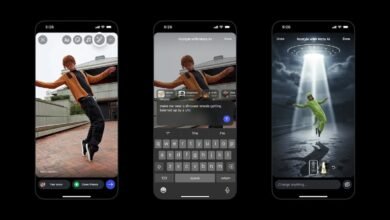Instagram’s Content Push vs. My Photo Posts

▼ Summary
– Instagram has become overly complex with numerous features like Stories, Reels, and polls, making simple photo sharing difficult.
– The app now feels like multiple apps combined, including a grid, Stories, and Reels, which were added over time.
– Users are constantly funneled into engaging with various features, such as Meta AI and Reels, even when trying to perform basic tasks like searching.
– The author experimented by using many features on a single post, resulting in an unbearable piece of “Content” rather than a simple photo.
– The author suggests a “simple photo sharing mode” to return to the app’s original purpose, as Instagram has shifted from photo sharing to a platform for engagement-driven content.
Navigating the modern Instagram interface can feel like an overwhelming chore rather than a simple act of sharing a photograph. What began as a straightforward photo-sharing platform has transformed into a complex ecosystem packed with features that often distract from the core experience. For many longtime users, the joy of posting a single image has been buried beneath a cascade of options for Stories, Reels, music integration, polls, prompts, and AI-generated captions.
The app now resembles several different platforms awkwardly merged into one. You have the traditional photo grid, which remains the primary interface for those who joined years ago. Then there are Stories, lifted directly from Snapchat, offering ephemeral content that many find engaging. Reels represent the platform’s aggressive push into short-form video, typically showcasing trends that already peaked on TikTok. Each of these sections operates almost as a separate application, creating a disjointed user experience.
Attempting to post a simple photo now triggers a flood of suggestions and settings. You might be prompted to add background music, overlay text, apply multiple filters, or even use Meta AI to rewrite your caption into a “prompt.” The process invites so much tinkering that the original image can become secondary to the decorative elements piled on top. In one experiment, enabling every available feature resulted in a post so cluttered it barely resembled a photograph, it had become generic “Content,” optimized for engagement rather than personal expression.
This shift reflects a broader strategy. Instagram is no longer just a gallery for your life’s moments; it’s a stage for content creation. The platform encourages users to see themselves as influencers, constantly refining posts to maximize likes, comments, and shares. While adding a song to a beach photo might appeal to some, others miss the simplicity of choosing a filter and moving on. The app’s insistence on layering features makes posting feel less like sharing and more like producing.
There’s a clear generational divide in how these changes are received. Those who recall Instagram’s earlier days often yearn for a cleaner, more focused interface. Imagine an “elder millennial mode” that strips away the extras and returns to the app’s photo-sharing roots. This wouldn’t require a separate application, just an optional setting to disable recommendations, AI tools, and algorithmic nudges. For users who prefer to post and go, such a feature would be a welcome relief.
Of course, digital platforms must evolve to stay relevant. Tastes change, and new formats emerge. There’s nothing wrong with placing a casual snapshot in Stories instead of the permanent grid. However, there’s a difference between maturing gracefully and becoming bloated. Instagram’s current design prioritizes constant engagement over user satisfaction, packing in every trend from the past decade to keep eyes on the screen.
Despite these frustrations, the app’s daily open rate remains high. Many of us continue logging in, scrolling through feeds, and occasionally posting, all while quietly wishing for a simpler way to share. In the end, the real desire isn’t for more features, but for the return of a space where a photo can just be a photo, not another piece of branded content.
(Source: The Verge)




